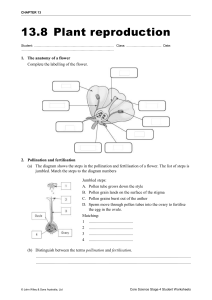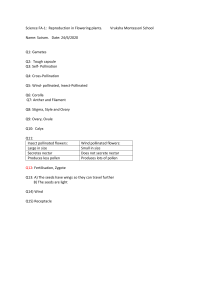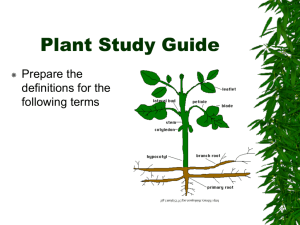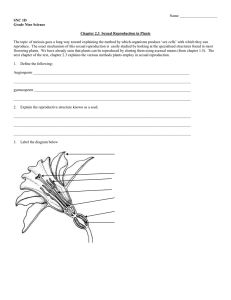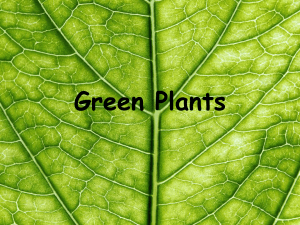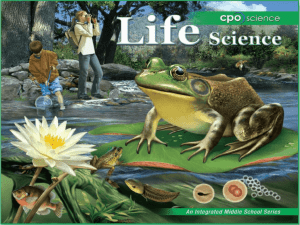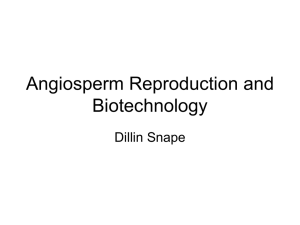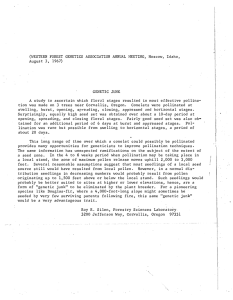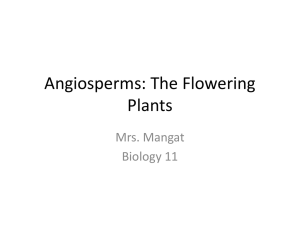Plant reproduction
advertisement
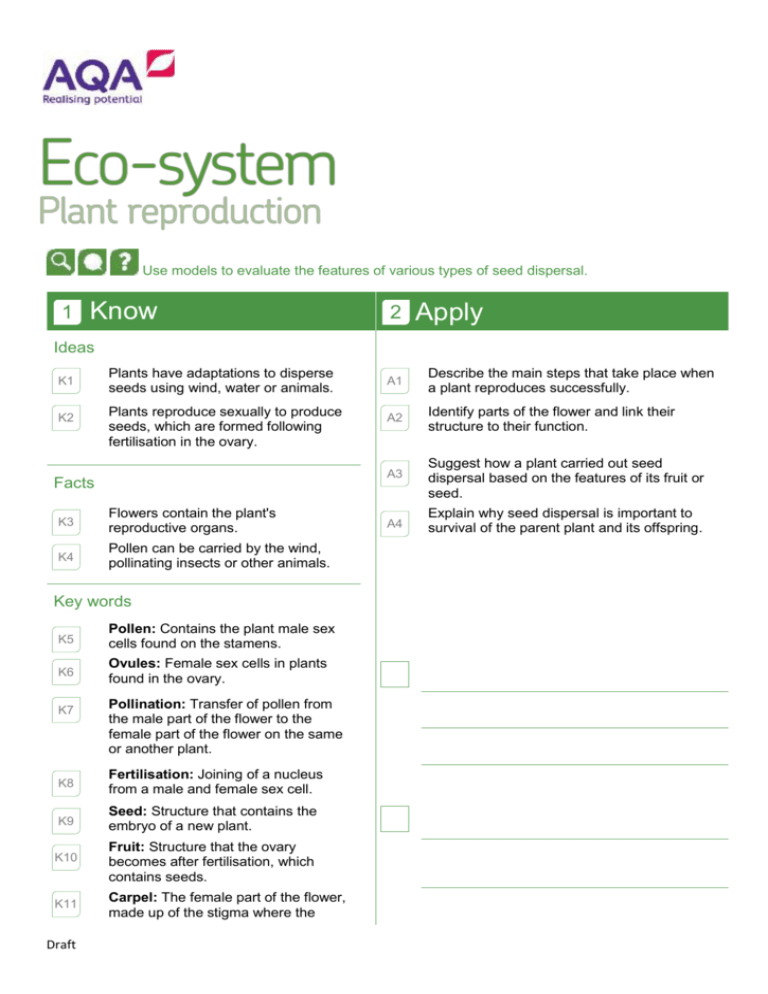
Use models to evaluate the features of various types of seed dispersal. 1 Know 2 Apply Ideas K1 K2 Plants have adaptations to disperse seeds using wind, water or animals. Plants reproduce sexually to produce seeds, which are formed following fertilisation in the ovary. Facts K3 Flowers contain the plant's reproductive organs. K4 Pollen can be carried by the wind, pollinating insects or other animals. Key words K5 Pollen: Contains the plant male sex cells found on the stamens. K6 Ovules: Female sex cells in plants found in the ovary. K7 Pollination: Transfer of pollen from the male part of the flower to the female part of the flower on the same or another plant. K8 Fertilisation: Joining of a nucleus from a male and female sex cell. K9 Seed: Structure that contains the embryo of a new plant. K10 Fruit: Structure that the ovary becomes after fertilisation, which contains seeds. K11 Carpel: The female part of the flower, made up of the stigma where the Draft A1 Describe the main steps that take place when a plant reproduces successfully. A2 Identify parts of the flower and link their structure to their function. A3 Suggest how a plant carried out seed dispersal based on the features of its fruit or seed. A4 Explain why seed dispersal is important to survival of the parent plant and its offspring. Pollen lands, style and ovary. 3 E1 E2 E3 Draft Extend Describe similarities and differences between the structures of wind pollinated and insect pollinated plants. Suggest how plant breeders use knowledge of pollination to carry out selective breeding. Develop an argument why a particular plant structure increases the likelihood of successful production of offspring.
